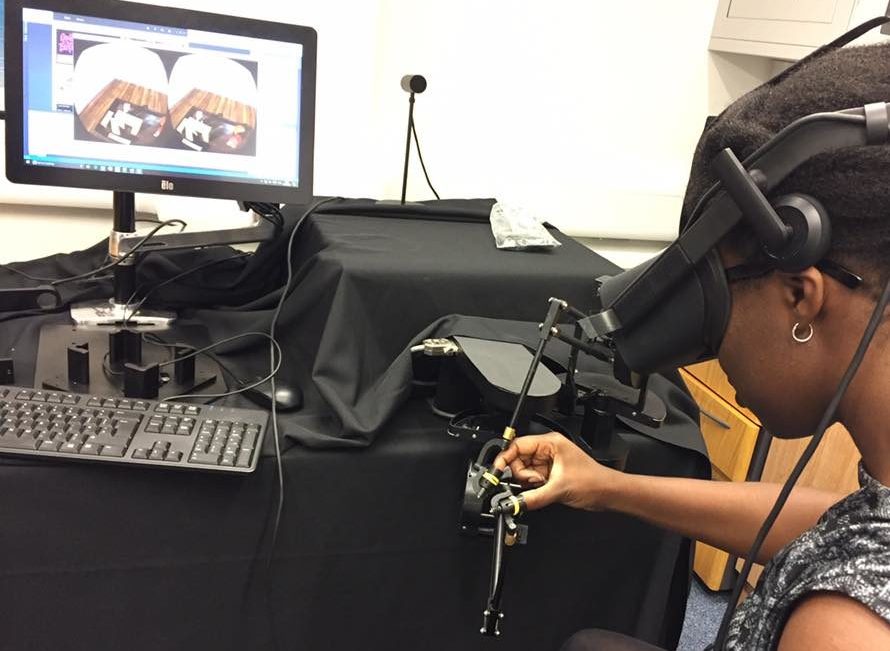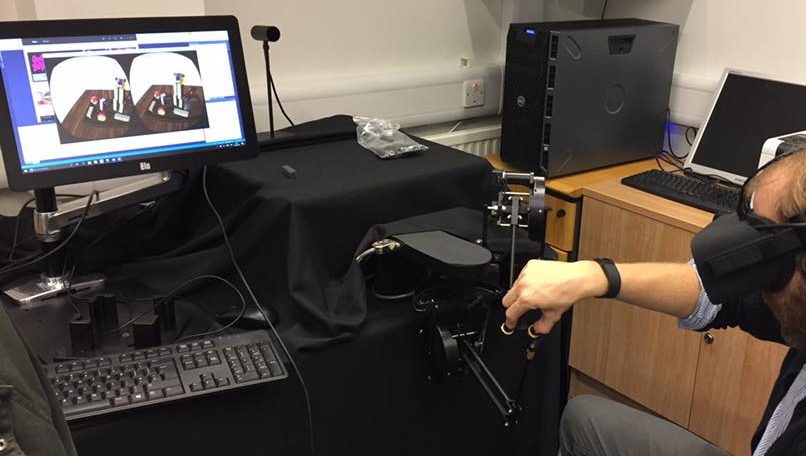Haptic feedback and you: Exciting Technology News
Some lesser people would use the term “exclusive” whilst bragging about technology other people haven’t had the privilege of messing with. Not us though, oh no. We would never stoop so low.
The following article contains exclusive revelations to hopefully excite you into a gibbering frenzy.
Apology – I wish to apologise for both the quality of the above joke and the duality of the incredible lie, as the following prototype has been around for 10 years. I’m both saddened and proud by such outrageous claims and the abuse of the general public’s ignorance on new technological matters. Thank you for your patience and please hit like, subscribe and give me money. I will lie again.
We have a new way of viewing the world around us with the introduction of affordable Virtual Reality. Now all we need is a new way to interact with these worlds.
Let’s talk Haptic controls.
So what the hell is a haptic-ma-jigger? Can it make me a cup of tea? What are you talking about? Why should I care about this thing? I don’t know what it is, can I buy one?
Haptic feedback is the sensation, touch or feel of virtual objects. Much like Virtual Reality itself this technology’s been around for some time. The rumble in your gamepad is a simple haptic feedback response.
What if you wanted more than rumble? What if you wanted to manipulate virtual objects in the virtual world? We could use the Vive controllers or Move wands. Wait, I can’t actually touch the virtual objects with wands. To feel an wooden block on your forefinger, to pick up an object that doesn’t exist.

You see an apple in the virtual world? Tempted are ya? You want to touch it.
You approach the workstation with some puzzlement as you note the strange spindly apparatus and Oculus Rift. You enter the virtual environment via the Rift and coo gently as you note the virtual desk in front of you. You’re given a jolt as your guide attaches the apparatus to your finger and thumb. Two bright coloured blue blobs denote your two fingers.
You can now interact with the objects in front of you.

What devilry is this!
You move your hand down, you go to push the apple. You feel it. Bloody hell, that’s odd. You push it along and marvel as it feels just like the real thing. What else can you do? You become adventurous as you casually pick up the block, noting the sensation on your fingers. It is uncanny. Much how virtual reality tricks the brain into believing you are there, the haptic finger feedback does the same when manipulating something that doesn’t exist. You squeeze too hard, your blue virtual fingers turn red, the software tricks you into believing you are really holding the rubix cube in your two fingers. Is that gravity you feel as it hangs below your fingers? “Witchcraft!”, you cry!
Haptic feedback, in this case, is slamming VR in your face whilst touching things with your filthy clammy fingers and saying “ohh, nice” out-loud.

Touchy, Touchy, Nice!
The brains behind Generic Robotics have been creating and using different synthetic touch apparatus for a number of years. The demo above is quite simple, but they provide similar technology that is used to train medical professionals: surgeons and dentists. Some London hospitals, such as King’s College London (KCL) Dental Institute in Guy’s Hospital, already use such systems and work with the company to continually improve and provide authentic representations of real medical situations.
Other teams have been using virtual reality to help patients directly as well as medical professionals. Some studies have involved patients with “phantom limbs”. This is a phenomenon where a patient who has recently lost a limb still feels itching or pain in the missing limb. They are essentially left with an itch that can’t be scratched. By using virtual reality, the patients were able to interact with their missing limbs and somewhat reduce their discomfort.
Obviously the first question we asked when confronted with such magic was “could we have more fingers please?” The answer was “yeah, sure thing”.

Jenga anyone? Guys? GUYS!
So how does any of this relate to you? Sure medical training tools are neat ‘an all. In it’s current state you won’t be setting up your home finger-toucher any time soon. For a start, gravity might be a problem, as you’ll need a force to counteract the arm waving foppishness.
As this technology is ill-suited to drilling holes into your house and re-appropriating your unborn child’s bedroom. Perhaps the arcade could make a comeback? Imagine the joy of walking into a small VR room with the ability to actually touch the imagined objects in the virtual world? It’s a scary and wonderful thought. We already have 4D rides, why not 4D rides with haptic punch gloves? When the technology’s moved on maybe one day, your own home could have your own object manipulation area within your own virtual environment. Hook it to the 3D printer and you’re halfway to writing your own horror film. You never know, you might come across a kickstarter for the home version. Attach me to the bloody ceiling, give me a gravity belt!
Holodecks are not a dream anymore, all the individual parts are here in the palm of our hands. I’ve touched it.

I am Haptic Master, fear me!
When the limitations to haptic technology melt away, this could be the technology that unlocks Virtual Reality’s full potential.
Many thanks to Generic Robotics for letting us loose in their lab.
Want to know more? Check out discoverhaptics.

